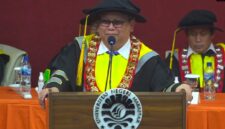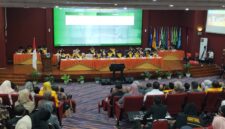Content
You can see the total projected expense on your private cloud accounts for the current month and the trend of cost over time. This chapter helps you understand cost drivers and the activities that create them. You can use that knowledge to reduce costs and increase your profit. (Ah, that marvelous bottom line — again!) It guides you through the steps … I’ve described a cost object in other chapters as a “sponge” that’s full of costs.
ADVERTISEMENT

SCROLL TO RESUME CONTENT
A factory overhead rate for each routinely-performed activity is calculated by dividing the total budgeted cost amount for the activity for a period by the total cost driver over the same time frame. The fraction for each activity is similar to the one used for the predetermined single factory rate, except at a more micro level. The Activity Based Costing approach relates indirect cost to the activities what is a cost driver in accounting that drive them to be incurred. Activity Based Costing is based on the belief that activities cause costs and therefore a link should be established between activities and product. The cost drivers thus are the link between the activities and the cost of the product. If the cost is high, there are likely to be lower profits in the first years of operation, and more profit as more costs are absorbed.
Join Free Accounting Education Online Classroom $hide=home
Please allocate the following costs based on the cost drivers. To carry out a value chain analysis, ABC is a necessary tool. To carry out ABC, it is necessary that cost drivers are established for different cost pools. Activity cost drivers are used in activity-based accounting . You measure your cost drivers at different points in time such as starting operation, opening a new branch office, and closing an outlet and compare or contrast the different rates. It is any factor other than the total number of units of a product produced, which can cause changes in total cost.
To ensure successful implementation of non-financial cost drivers, it is essential to define and document objectives and rationale, and communicate them clearly to the stakeholders. Moreover, standards and procedures should be established for collecting, validating, and reporting data related to non-financial cost drivers. Additionally, a balanced mix of financial and non-financial cost drivers should be used, while avoiding over-reliance on either type of measure. Finally, performance and impact should be monitored and evaluated, with adjustments and improvements made as needed.
Identify Cost Drivers
You can add or edit the cost drivers as per your requirement. The total cost of your private cloud is the sum of all these cost driver expenses. Drive resource costs to an activity, cost object, or another resource and link expenses captured in the general ledger to the activities performed. The rising cost is relative and will not increase the price of each unit, as it functions in a relative manner.
- Presumably, you can set the machinery to one setting to obtain the desired product quality and taste.
- Since these people are not making any particular product, their salaries and other expenses of that function are included in indirect factory overhead.
- A cost driver is the direct cause of a costand its effect is on the total cost incurred.
- Can be identified with a product, process, department, or customer and tracked back to why the cost was incurred.
Show bioBrianna has a masters of education in educational leadership, a DBA business management, and a BS in animal science. Sales and all related variable expenses are often the driver for commissions, bad debt, insurance expense, and so on. The unit of an activity that causes the change in activity’s cost. Investopedia requires writers to use primary sources to support their work. These include white papers, government data, original reporting, and interviews with industry experts. We also reference original research from other reputable publishers where appropriate.
Cost driver definition
The articles and research support materials available on this site are educational and are not intended to be investment or tax advice. All such information is provided solely for convenience purposes only and all users thereof should be guided accordingly. This involves choosing a fixed point in time such as starting your company operations, opening a new branch office, closing an outlet, and then measuring the number of items produced or delivered after you do this. Stay the same regardless of how many units you produce or sell, as long as your company keeps operating at 100%. Remain the same regardless of the number of units produced and sold.
- Instead, they encompass all of the factors that contribute to the overall cost.
- This fee is the cost object, and it is difficult to distribute that cost across the business, as it fluctuates, based on the level of production and transportation activity.
- Essentially, each normalized cost incurred from the start of production to the finished product falls in the cost driver category.
- Activity-based costing is a method of assigning overhead and indirect costs—such as salaries and utilities—to products and services.
In other words, it is a variable that affects your business’s expenses. Cost driver can be any measurable input that affects the costs of a company, either directly or indirectly. Cost drivers can be fixed costs, such as in the case of set-up costs. Whatever determines the total cost of a particular activity should be analyzed in-depth to ensure that a proper allocation base is used. Cost drivers follow a cause-effect relationship, and if the relationship cannot be established, then a more relevant driver should be looked for. The cost driver editing process has been enhanced to support export and import of existing cost driver configurations.
What is another name for cost driver?
An activity cost driver is an action that triggers higher or lower variable costs for a business. Sometimes referred to as a causal factor, it is associated with the managerial accounting concept of activity-based costing (ABC).












